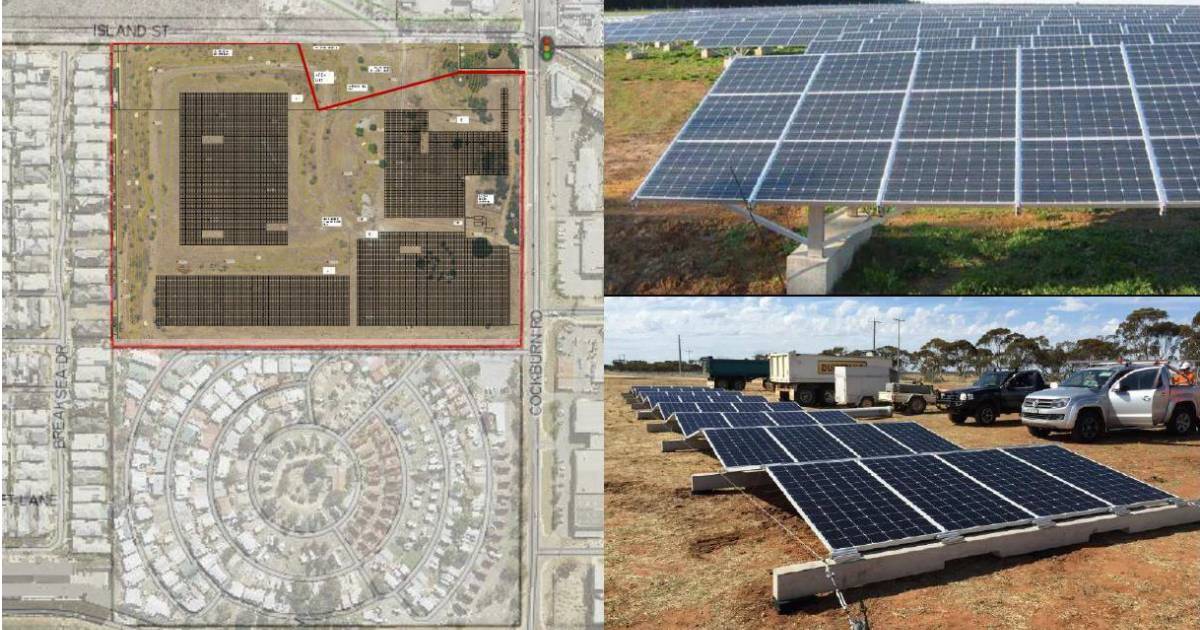After being in the pipeline for years, it’s looking like a proposed urban solar farm in Western Australia’s South Fremantle won’t be going ahead.
The South Fremantle Solar project was to be situated at the former South Fremantle landfill, which operated between 1930 and 1991. It’s a great location for a solar farm given other many forms of development won’t be viable for years due to site contamination issues.
In 2014 the City of Fremantle started looking into the possibility of a solar farm for the site and called for expressions of interest. Council then entered into an agreement with Epuron, enabling the company to fully scope out the project.
In 2018, Epuron submitted a development application for a 5MW PV project that would have been Australia’s largest urban solar farm at the time. Later that year, Council approved the business plan for South Fremantle Solar.
The last project update on Council’s community consultation page was in June last year; indicating Epuron was continuing to review funding options and power purchase agreements for the solar farm. At that point Council was expecting a decision on whether the project was likely to proceed by the end of 2021; which didn’t happen.
Epuron Gave South Fremantle Solar A Red-Hot Go
But now we know the project’s fate under Epuron. While the company’s South Fremantle Solar page is yet to be updated, it won’t be going ahead.
According to Council, in March 2022 Epuron requested the City consider agreeing to a transfer of the project to another commercial entity as the company had not been able to reach an agreement with any retail electricity supplier to purchase power from the project.
Perhaps not helping things was the City of Fremantle entering into a large-scale power purchase agreement late last year whereby 100% of its contestable sites’ energy supply would come from renewable energy sources already established in Western Australia.
According to a report from City’s Director of Strategic Planning and Projects:
“Although the City had never made a firm commitment to purchase power (via a retailer) generated from a solar farm on the South Fremantle site, the possibility of this outcome had been to some degree a consideration in assessing the commercial viability of the project from a developer/operator’s point of view.”
As for the project going to another entity, the Director’s report states:
” Given that in over five years Epuron has not been able to bring the project to fruition, City officers are not confident that another party would be more successful in progressing the project and executing a lease in a timely manner.”
The report recognised Epuron ” used its best endeavours” to bring the project to fruition.
In addition to Council issuing a termination of the association, the Director has recommended:
- Terminating any further efforts on facilitating development of a solar farm on the former South Fremantle landfill site.
- Looking into potentially suitable alternative uses for the site.
A proposed amendment to the recommendations is options for investigation should not necessarily exclude some form of solar energy or other type of renewables project. While the decision taken at yesterday’s meeting hadn’t yet been published at the time of writing, it seems the demise of South Fremantle Solar is a done deal for the foreseeable future – and that’s a shame.
The full Director’s report on the South Fremantle Solar project can be found here (starts on page 16).
Related: Solar Power In South Fremantle.


 RSS - Posts
RSS - Posts



Does this mean solar farms are only viable when there is a long term commitment to buy their power? Are solar farms not viable when forced to compete directly in the energy market? Or am I missing something?
It dose raise the question
If there is already(or will be) surplus energy during the daylight hours and no profit to be made, Companies will just not make new solar farms.
We are all seeing it personally with the drop in our export values, however we still benefit from usage.
Companies building solar farms dont have that benefit.
There would need to be some massive increase in storage to allow it, but they would also be wanting to make a profit.
Maybe power supply should never have left the government.